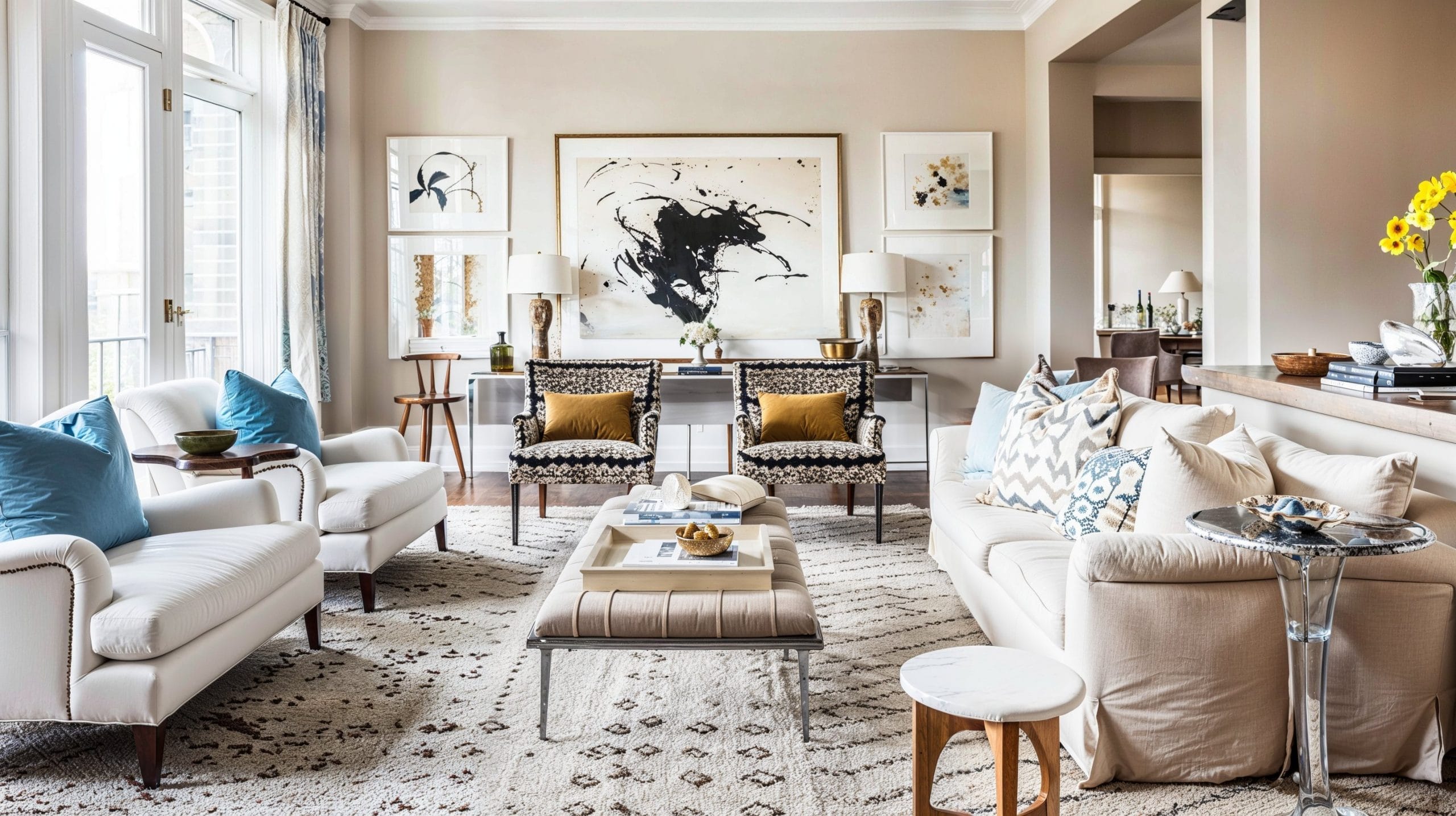Discover luxury interior design for an elegant touch.
Transform Your Home With Necessary Principles of Interior Layout and Aesthetics
By comprehending the impact of shade concept and the relevance of structure and patterns, one can create rooms that are not only visually enticing however also deeply individual. Accomplishing this equilibrium entails even more than simple decor; it includes a tactical setup and a keen understanding of how each component engages within an area.
Recognizing Color Concept
Understanding the concepts of shade concept allows designers to develop rooms that resonate mentally with owners while fulfilling practical needs. Each category plays a vital duty in establishing consistency within a room.
The psychological effect of shades is profound; warm colors such as reds and oranges stimulate energy and warmth, while trendy tones like blues and greens promote calmness and peace. The usage of complementary colors enhances visual rate of interest, producing striking contrasts that can raise a space's allure.
Neutral shades, on the various other hand, serve as a versatile backdrop, allowing other design elements to shine. It is important to think about aspects such as illumination and the area's function when choosing a shade combination, as these can change the understanding of shades throughout the day.
Eventually, a well-considered color plan can transform an area, cultivating a sense of comfort and design that straightens with the inhabitants' choices. Mastery of color theory is, consequently, a vital ability for any type of interior developer aiming to create harmonious and welcoming settings.
Accomplishing Balance in Design
Exactly how can designers attain a sense of stability in their spaces? Attaining equilibrium in style is basic to creating unified interiors. Developers can utilize 3 primary sorts of equilibrium: symmetrical, asymmetrical, and radial. In proportion balance involves preparing components uniformly around a central factor, promoting a sense of order and harmony. This type typically features sets of furniture or art work, enhancing aesthetic stability.
Unbalanced equilibrium, on the various other hand, depends on differing elements that still attain a cohesive appearance. This approach enables more dynamic and casual plans, providing rate of interest while keeping balance. By thoroughly choosing varying sizes, shades, and textures, designers can develop a visually engaging room that feels balanced yet energised.
Radial equilibrium emphasizes a central centerpiece with elements radiating exterior. This style is typically seen in round designs, where furniture and decoration develop a cohesive surround that draws the eye inward.
Inevitably, accomplishing equilibrium calls for thoughtful factor to consider of scale, proportion, and the connections between components. interior design firms. By skillfully applying these balance principles, designers can transform rooms right into atmospheres that really feel both cosmetically pleasing and functionally unified, boosting the total experience for occupants
Significance of Spatial Understanding

A additional reading keen sense of spatial understanding permits developers to recognize focal points within a space, leading the viewer's attention to essential functions while preserving a general sense of unity. It additionally aids in the tactical placement of lighting, which can drastically affect the understanding of room and mood. Recognizing spatial partnerships allows the developer to cater to the specific demands of citizens, making certain that each area serves its desired objective without jeopardizing appearances.
Inevitably, spatial recognition is important for making best use of the capacity of any indoor area. By meticulously thinking about the interplay in between dimensions, format, and function, developers can create settings that not only meet functional requirements yet likewise stimulate a feeling of comfort and elegance, improving the overall living experience.
Integrating Texture and Patterns
Accepting a varied range of appearances and patterns can considerably boost the visual and responsive appeal of an indoor area. The strategic usage of various materials-- such as timber, metal, material, and stone-- creates deepness and passion, making a room really feel more inviting and vibrant. Combining smooth surfaces with harsh textures can establish a balance that attracts the eye and engages the detects.
When including patterns, consider both scale and repeating. Huge patterns can function as focal factors, while smaller, subtle styles can match various other elements without overwhelming the area. Layering patterns, such as pairing flower cushions with striped throws, includes intricacy and a feeling of have a peek here consistency if carried out attentively.
It is likewise important to maintain a natural color combination, ensuring that textures and patterns interact rather than complete for focus. By picking a couple of essential textures and patterns, you can create a merged visual that shows your personal style while improving the total setting of the space. Eventually, the careful incorporation of these components can change a mundane room right into an innovative atmosphere rich with personality and warmth.
Personalizing Your Room
Producing a room that shows your personality is vital to attaining a genuinely inviting setting. Personalization in interior decoration permits you to infuse your one-of-a-kind style and interests right into your home, changing it from a mere sanctuary into a refuge that speaks with who you are. Begin by choosing a color scheme that reverberates with your feelings-- bold shades can energize, while soft tones provide harmony.
Integrate artwork and style that reflect your passions, whether it be traveling, nature, or abstract concepts. Showing individual collections, such as books, pictures, or souvenirs, can evoke valued memories and create focal factors within an area. Furthermore, take into consideration personalizing useful items, like upholstered furniture, to line up with your visual choices.

Verdict
To conclude, the improvement of a home via the necessary concepts of interior design and aesthetics necessitates a detailed understanding of shade concept, equilibrium, spatial awareness, structure, and customization. Each aspect adds significantly to creating a harmonious and practical living setting - Architecture Firm. By attentively incorporating these concepts, people can boost the aesthetic allure and psychological resonance of their spaces, ultimately fostering a home that reflects distinct identities while offering you could look here convenience and functionality